Your outdoor space deserves the same thoughtful attention as your living room. While sturdy furniture forms the foundation, it’s the outdoor throw pillows that breathe personality, comfort, and sophistication into your patio or deck. These versatile accessories do more than just soften hard surfaces—they’re your secret weapon for seasonal transformations, personal expression, and maximizing that coveted “al fresco” aesthetic.
As an interior designer specializing in outdoor living, I’ve watched clients repeatedly underestimate the impact of well-chosen cushions. A recent survey of luxury patio transformations revealed that 87% of high-end projects incorporated strategic pillow layering as a cost-effective upgrade (livingspaces.com). The right combination creates visual harmony while inviting relaxation. Crucially, durability matters—sun-baked fabrics fade, rainy days saturate cheap fills, and winds scatter poorly anchored accents.
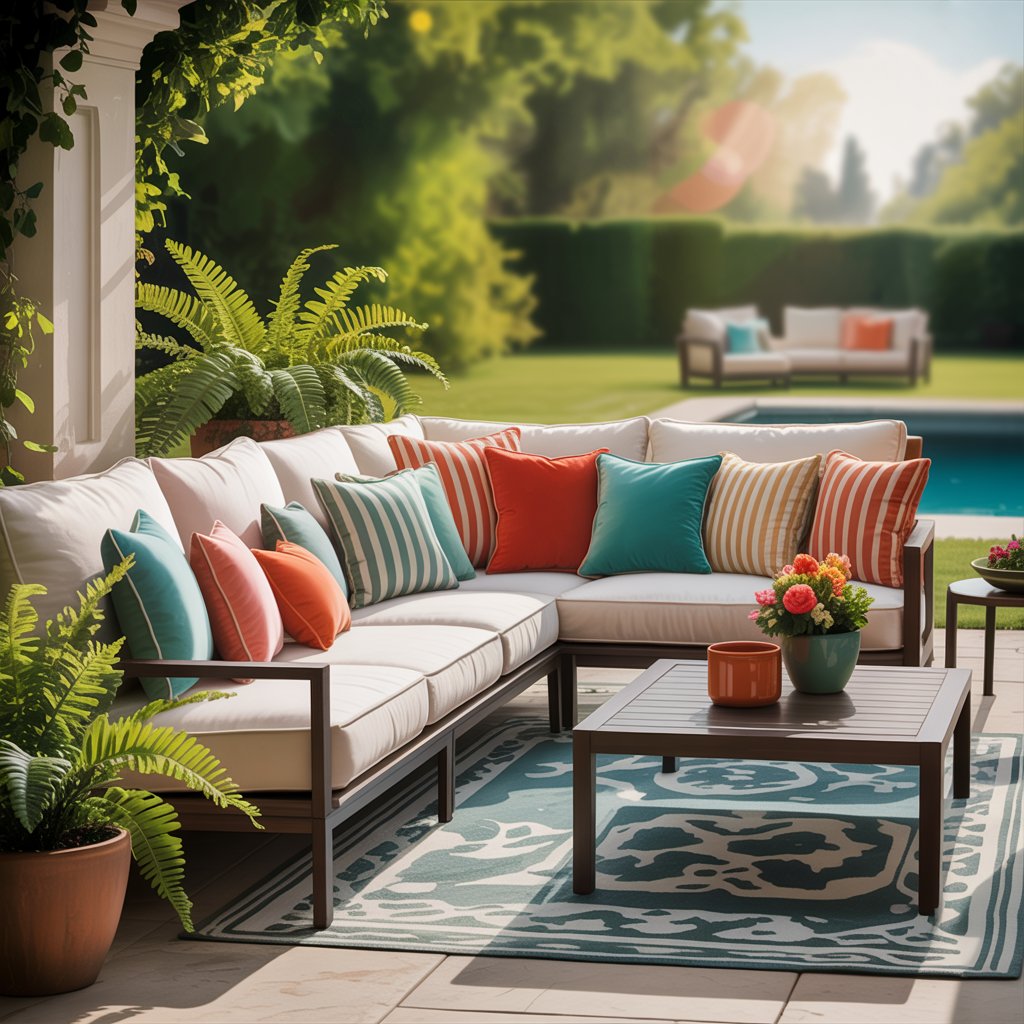
This guide delivers 15 stylish yet practical outdoor throw pillow ideas tested across American climates. You’ll discover how to balance aesthetics with resilience, leverage color psychology for mood enhancement, and implement pro storage solutions that extend pillow life by 300%. Whether you’re designing for a coastal balcony in Miami or a mountain deck in Colorado, these actionable strategies will elevate your space beyond basic “patio furniture.”
1. Sunbrella Fabric Classics: The Non-Negotiable Foundation
Start with pillows made from performance fabrics like Sunbrella—the industry gold standard for weather resistance. These acrylic-based textiles repel water while resisting UV fading, making them ideal for relentless summer sun or sudden spring showers (architecturaldigest.com). Unlike cotton or polyester blends, genuine Sunbrella maintains color vibrancy for years with minimal maintenance.
Invest in 2-3 neutral-toned foundation pillows in charcoal, oat, or clay to anchor your seating area. These versatile bases work year-round and pair seamlessly with seasonal accent pillows. The fabric’s inherent texture adds subtle dimension even in monochromatic schemes. For high-traffic areas like dining sets, opt for removable covers that can be machine-washed quarterly.
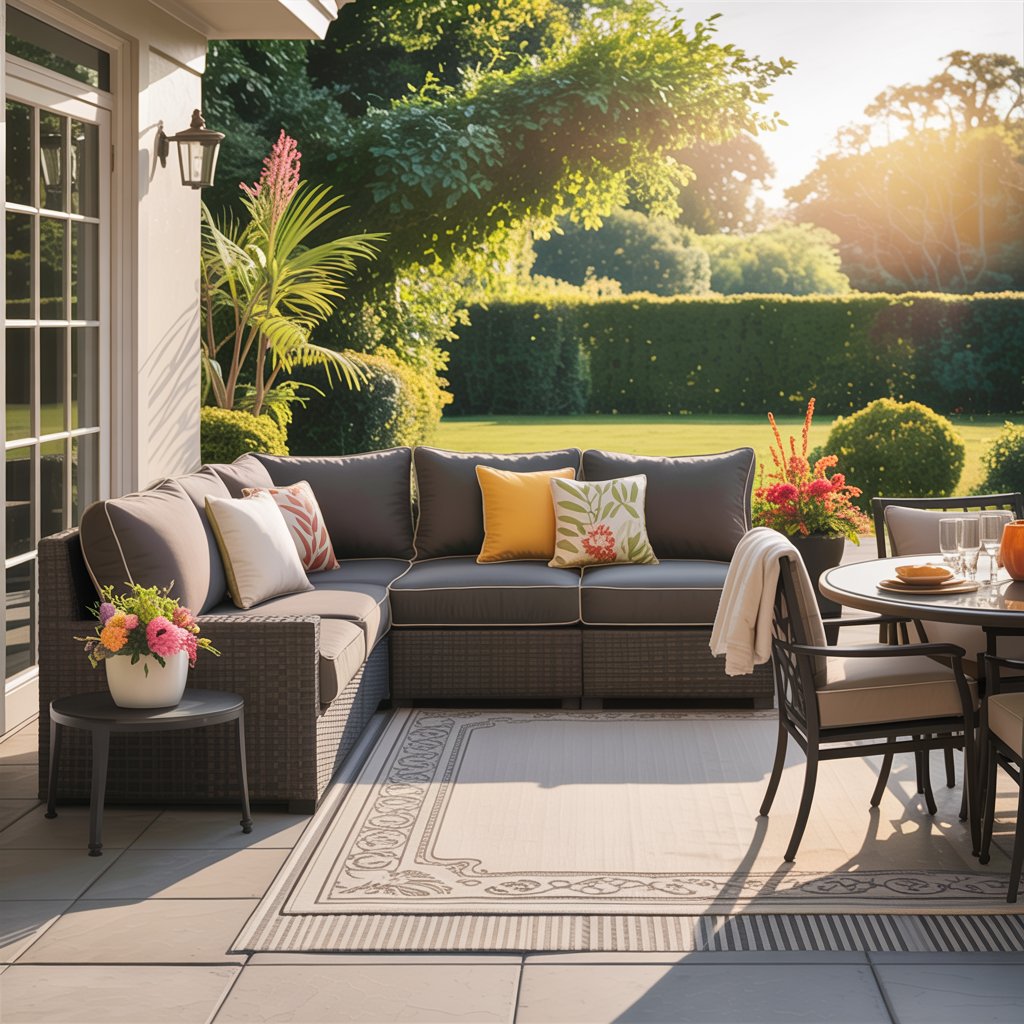
Pro Tip: Check fabric certifications. Genuine Sunbrella carries a label indicating it’s solution-dyed (pigments added during fiber manufacturing), ensuring fade resistance. Counterfeit products often degrade within one season.
2. Coastal Stripes for Nautical Elegance
Channel Hamptons charm with navy-and-white or coral-and-ivory striped pillows. These classic patterns instantly evoke breezy seaside sophistication without overwhelming your space. Balance bold stripes with solid-colored cushions to prevent visual chaos—aim for a 60-30-10 ratio (60% solids, 30% stripes, 10% accent patterns).
For authenticity, choose flatweave fabrics that resist water absorption. Avoid tight twill weaves that trap moisture. Coastal pillows shine on Adirondack chairs or deep-seating sofas near fire pits. Pair with natural fiber rugs and woven trays for layered texture. Remember: horizontal stripes widen spaces visually—perfect for narrow balconies.
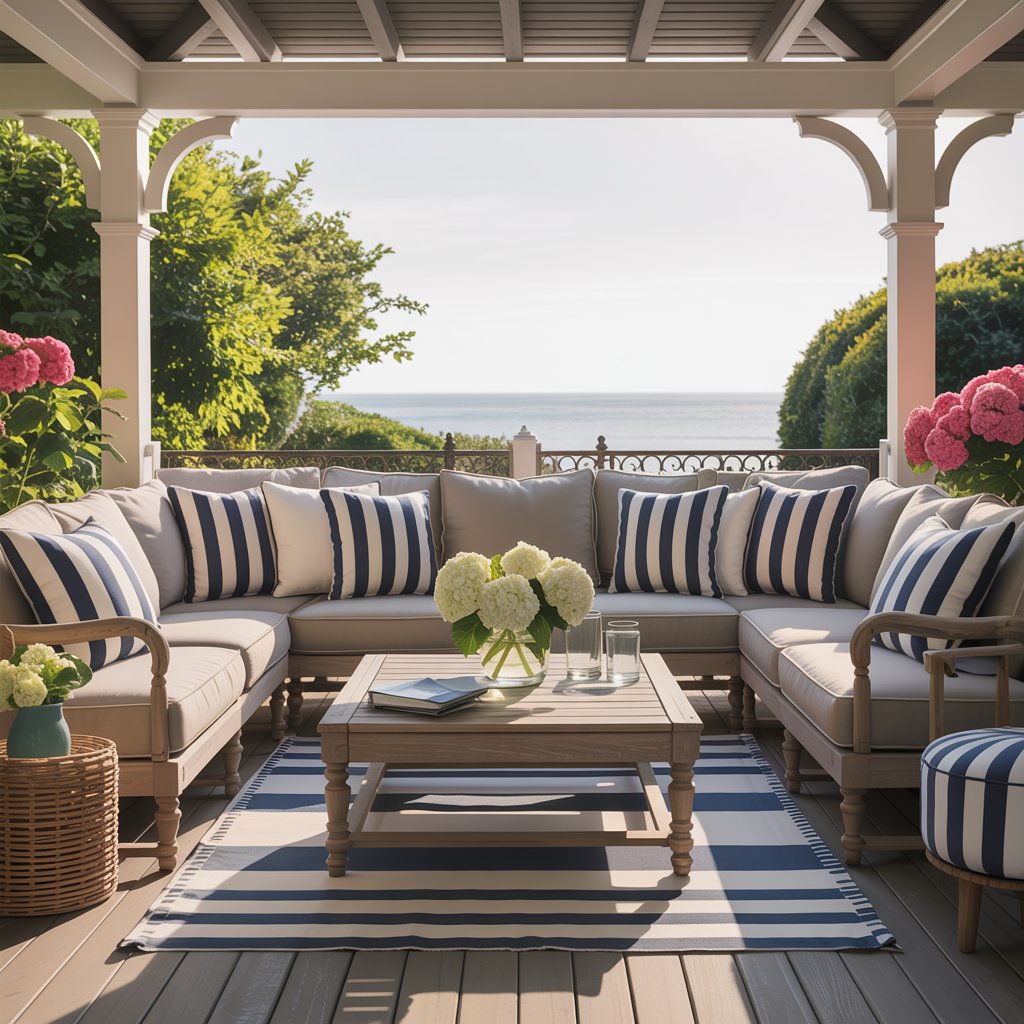
Designer Quote: “Stripes create movement that guides the eye through your landscape. In coastal zones, they mimic horizon lines for instant tranquility.” — Courtney Marquez, Outdoor Design Specialist
3. Earthy Textured Neutrals for Year-Round Sophistication
Replace basic taupe with richly textured neutrals like burlap, linen-look performance fabric, or woven rattan fronts. These materials add organic depth while hiding dirt—critical for family-friendly patios. Mix matte and slightly reflective surfaces (like ceramic bead accents) to create light-play during golden hour.
Layer three differently textured pillows on a sectional: a nubby oat-colored square, a flat-woven charcoal lumbar, and a softly crinkled ivory bolster. This combination delivers tactile interest without color competition. Earth tones work particularly well against cedar furniture or stone patios, creating seamless indoor-outdoor flow.
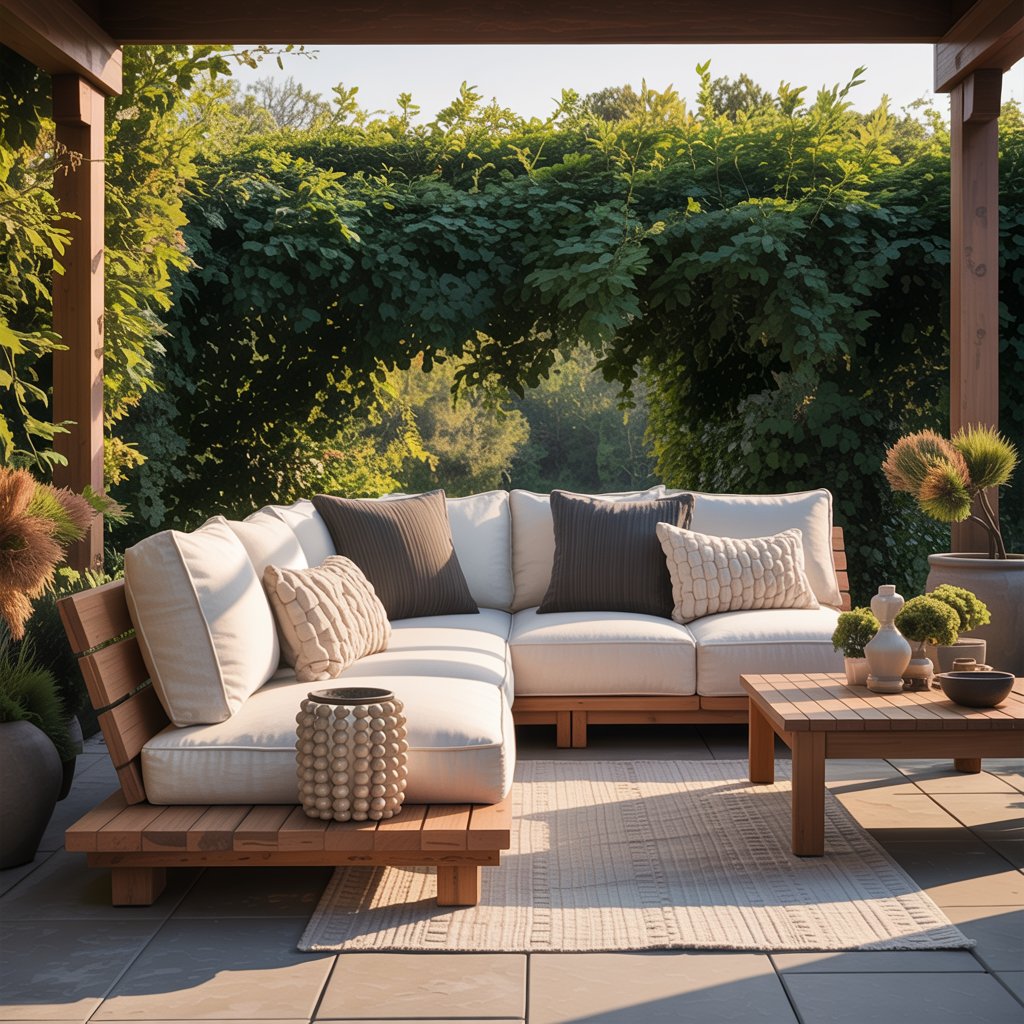
Pro Tip: Vacuum textured pillows monthly with a brush attachment to prevent dust buildup in fabric grooves—a common cause of premature wear.
4. Bold Geometric Prints for Modern Edge
Inject contemporary energy with chevron, honeycomb, or asymmetrical line patterns in saturated hues like terracotta, emerald, or cobalt. These statement pieces thrive on minimalist furniture (think clean-lined aluminum or teak). Limit geometrics to one or two pillows per grouping to avoid overwhelming the space.
For cohesive styling, pull one accent color from your geometric print into other elements—a matching outdoor rug, ceramic planters, or even your grill cover. Modern designs pair exceptionally well with metal furniture and geometric-shaped fire pits. In smaller spaces, use geometrics on a single accent chair rather than large sofas.
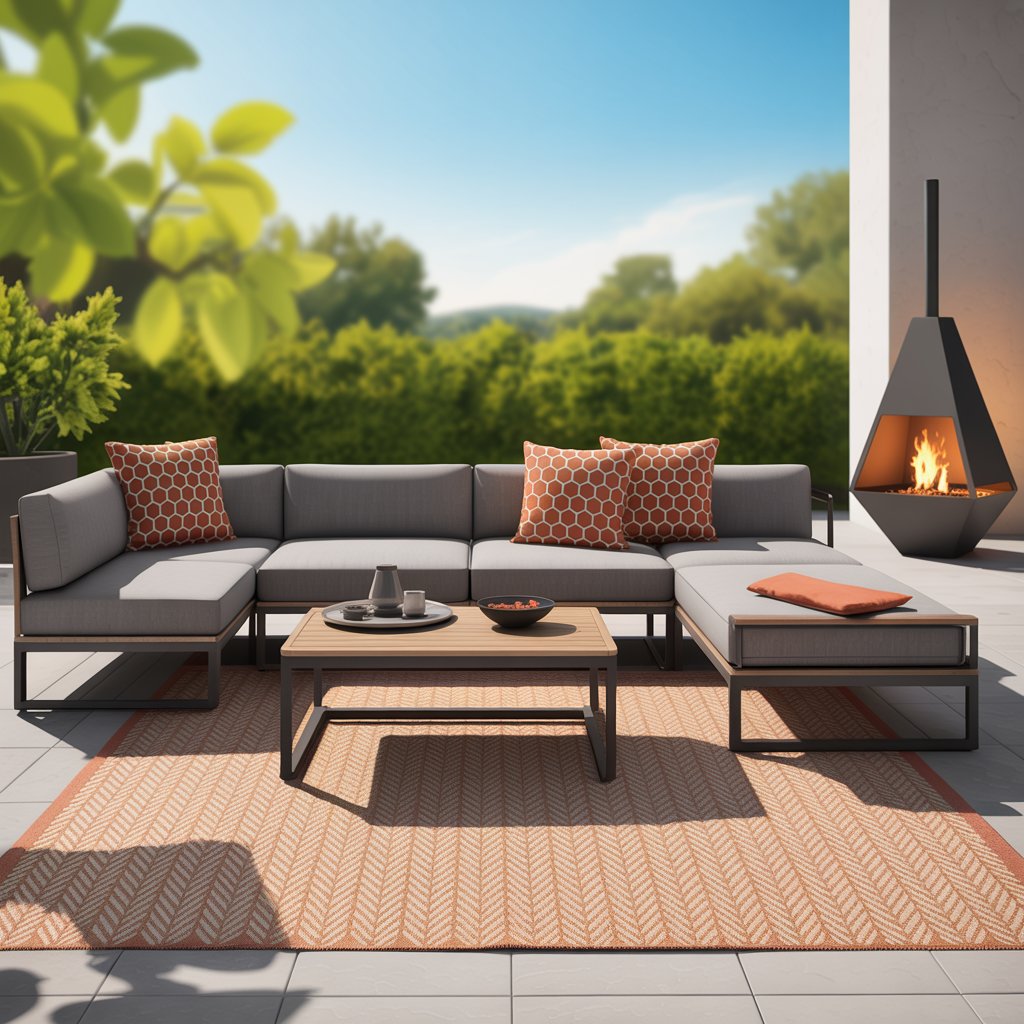
Pro Tip: Place geometric pillows against solid-color walls or foliage backdrops. Patterns disappear when competing with busy visual environments like floral gardens.
5. Floral Patterns with a Contemporary Twist
Move beyond grandma’s garden with oversized, abstract florals in moody tones: deep plum peonies, indigo daisies, or burnt orange poppies. Contemporary botanical prints work surprisingly well in urban lofts and rustic cabins alike. Choose dark backgrounds to hide pollen and dirt common in outdoor settings.
Position floral pillows opposite neutral seating to let the patterns shine. On a deep sofa, flank a floral centerpiece pillow with two solid cushions. During spring/summer, layer with lighter-weight covers; in fall, swap to jewel-toned botanicals that complement changing leaves. Avoid small-scale traditional prints—they get lost visually outdoors.
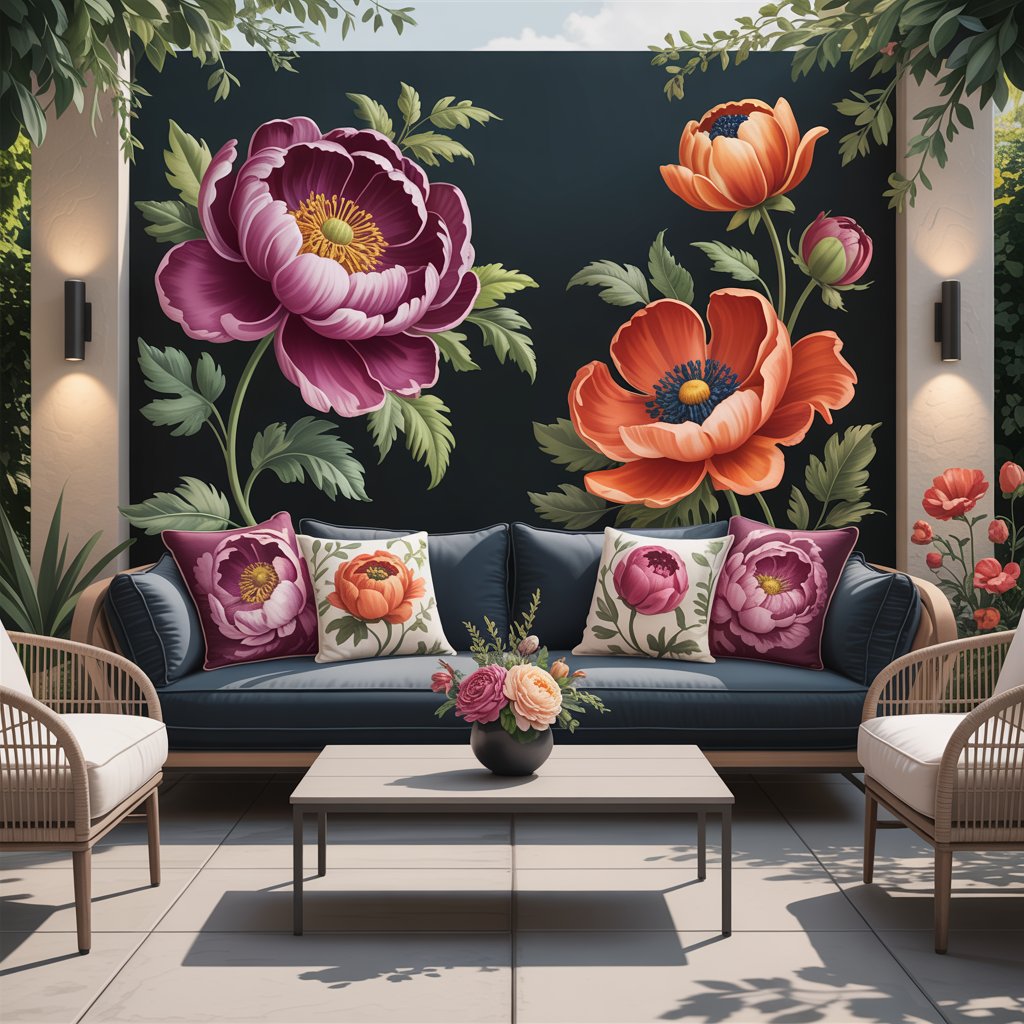
Pro Tip: Select prints with 3-4 dominant colors max. Too many hues creates visual noise when viewed from across the yard.
6. Vintage-Inspired Embroidery for Personality
Elevate basics with pillows featuring hand-embroidered details or appliqué motifs like suns, pineapples, or abstract shapes. These artisanal touches add whimsy while showcasing craftsmanship. Look for pieces with tightly stitched designs that won’t unravel in humid conditions.
Place embroidered pillows on solid-color chaise lounges or porch swings where details will be visible up close. For cohesive styling, match thread colors to nearby elements—a yellow sun motif against a yellow front door, for example. Etsy designers offer excellent customization for these statement pieces (fj-outdoors.com).
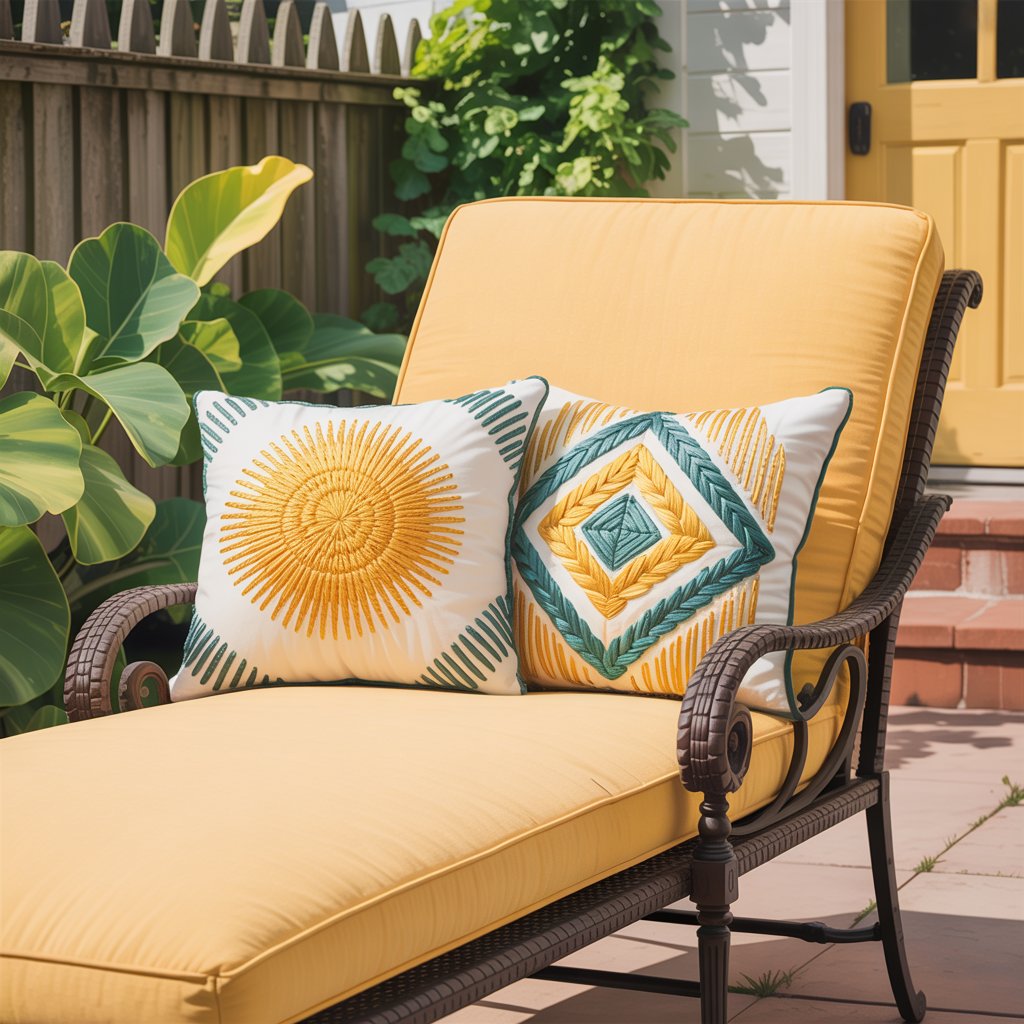
Pro Tip: Hand-wash embroidered pillows in cold water with mild soap. Machine agitation can distort delicate stitches over time.
7. Monochromatic Layering for Luxe Simplicity
Create instant sophistication by stacking 3-4 pillows in varying shades of a single color family (e.g., sand, ochre, and mustard). This technique adds dimension without visual clutter—ideal for small city balconies. Use different textures (ribbed, flat, nubby) to enhance the effect.
Start with your lightest shade as the base layer, graduating to darkest at the front. Add a subtle metallic thread pillow (like gold-embroidered charcoal) for evening shimmer. Monochromatic schemes photograph beautifully—a bonus if you host Instagrammable brunches! This approach also simplifies seasonal transitions; just swap bronze tones for frosty blues in winter.
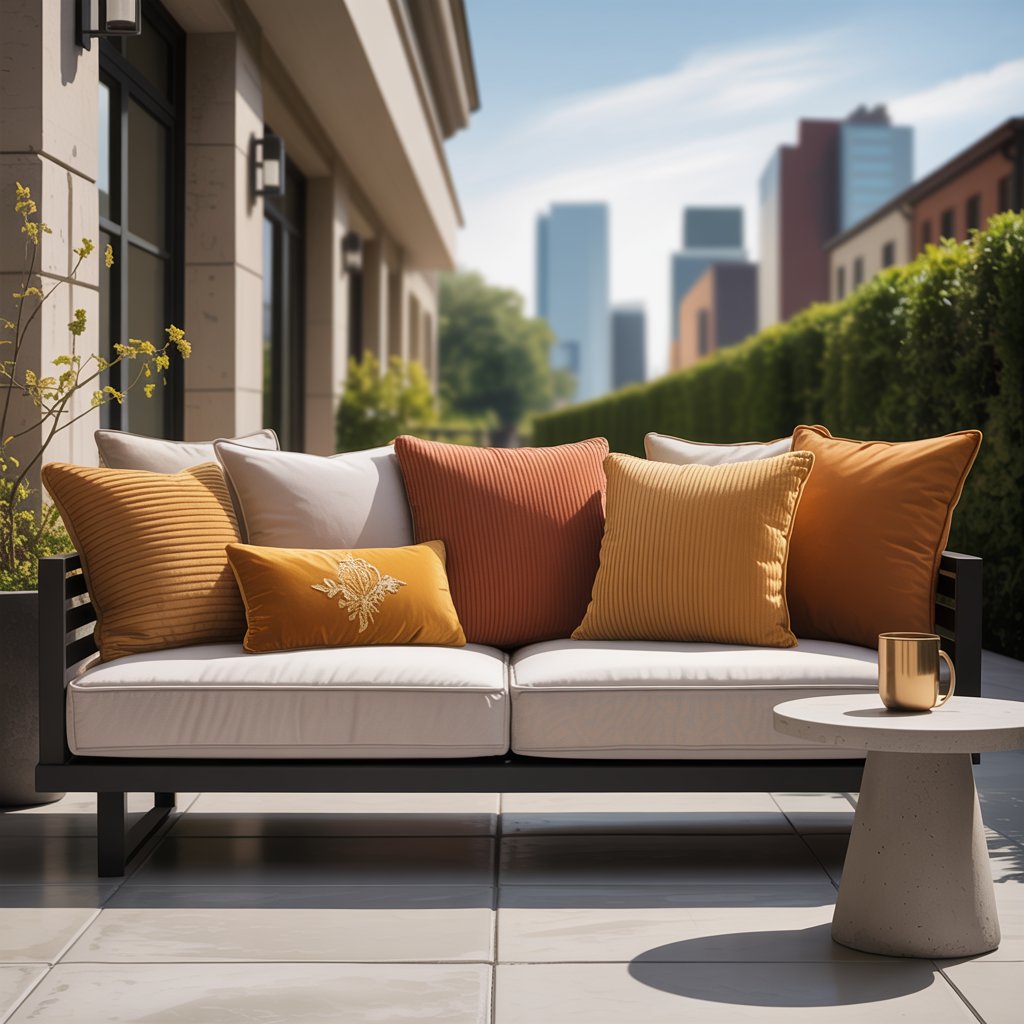
Pro Tip: Stick to cool or warm undertones consistently. Mixing blue-based and yellow-based neutrals creates unintentional disharmony.
8. Weather-Resistant Velvet for Unexpected Glamour
Surprise guests with outdoor velvet pillows in jewel tones like sapphire or forest green. Modern performance velvets use polyester microfiber that repels moisture while maintaining plush texture. The fabric’s light-catching quality creates dynamic visual interest as sun angles change throughout the day.
Use velvet pillows sparingly—two max per seating area—to prevent overwhelming your space. They shine against woven wicker or dark wood furniture. For coastal homes, avoid light colors that show salt residue; desert dwellers should skip heat-absorbing dark shades in southwest exposures. Velvet demands slightly more maintenance but delivers unparalleled richness.
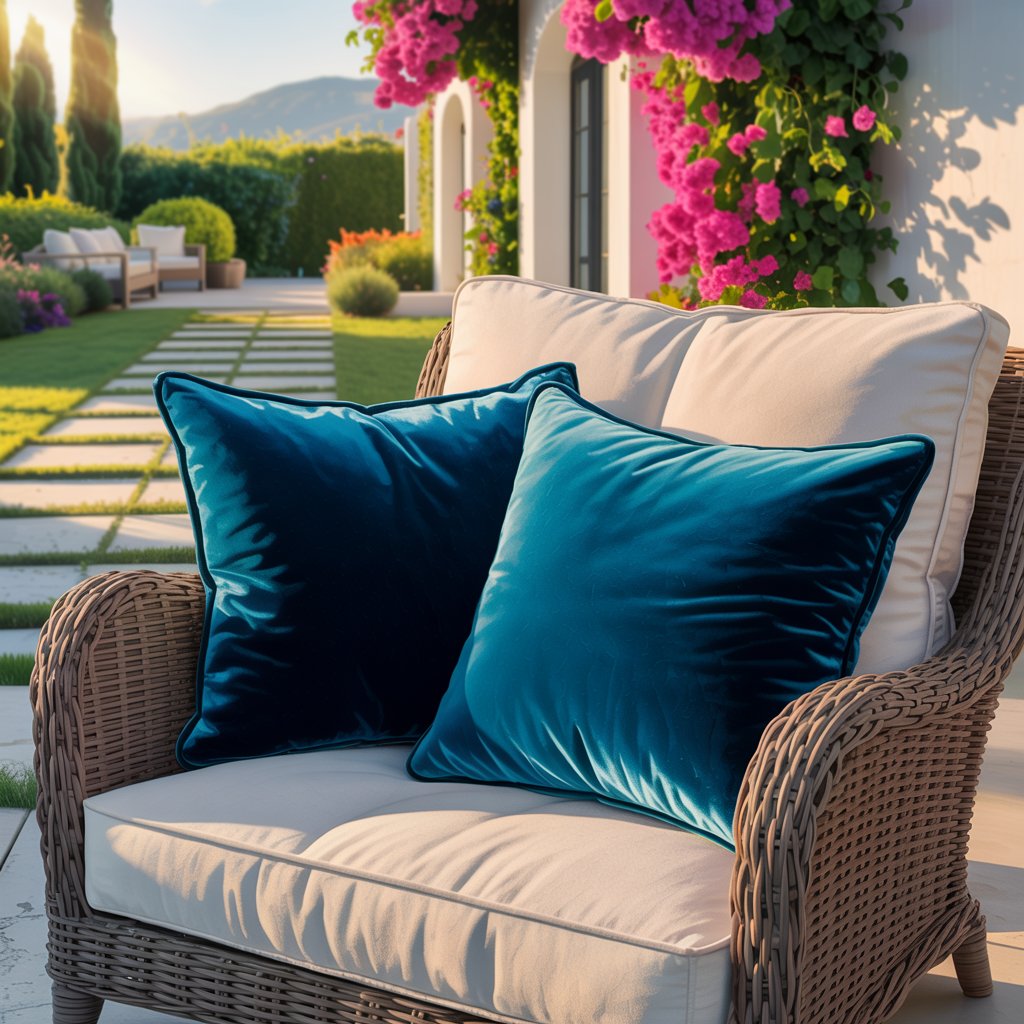
Pro Tip: Brush velvet pillows downward with a soft bristle brush monthly to restore nap and prevent water spots.
9. Reversible Pillows for Seasonal Flexibility
Maximize value with reversible outdoor pillows featuring contrasting patterns/colors on each side. Flip them seasonally (florals for spring, plaids for fall) or monthly to refresh your space without new purchases. This is especially valuable for renters who can’t alter permanent fixtures.
Look for hidden zippers that allow complete cover removal for washing. Opt for complementary color stories (e.g., navy/white stripes on one side, solid navy on the other) rather than jarring contrasts. Some premium brands offer seasonal swap programs where you return old covers for discounted new ones (patioline.ca).
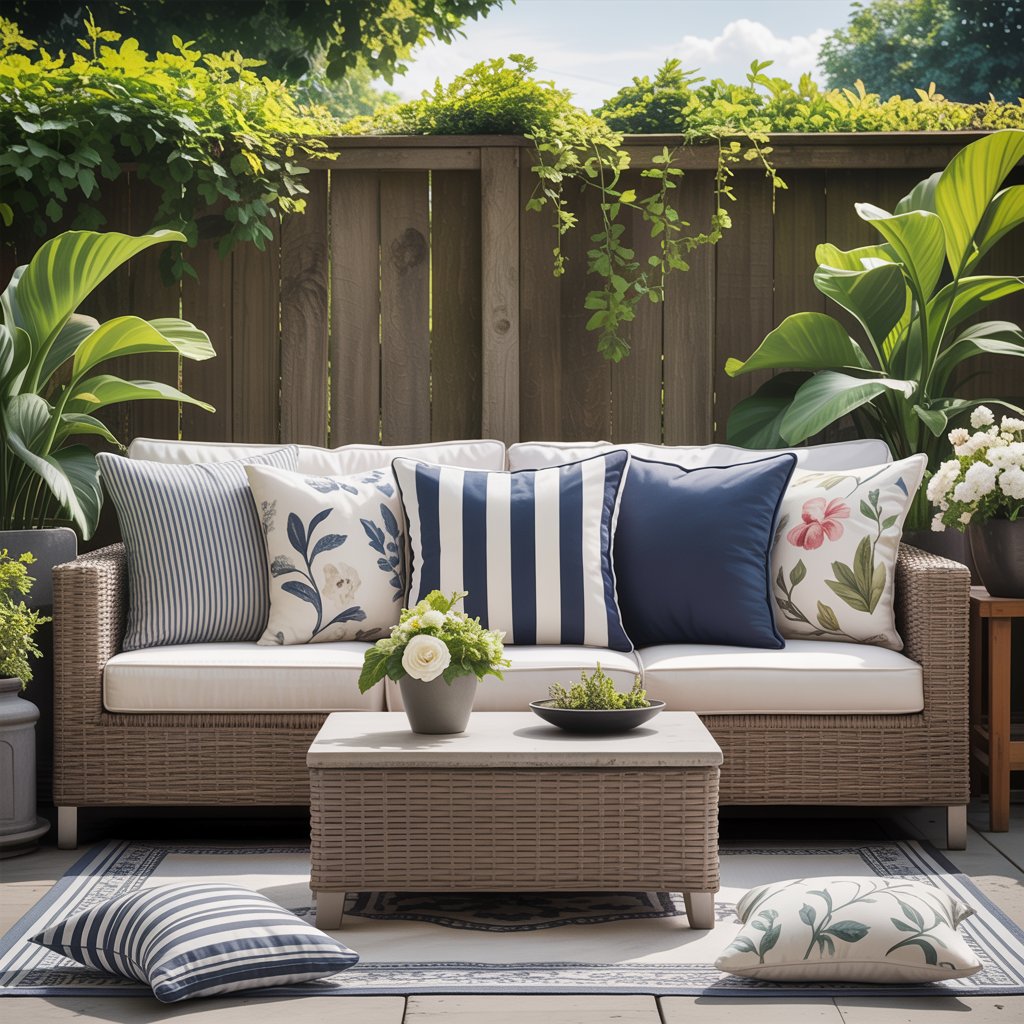
Pro Tip: Store off-season pillow covers in vacuum-sealed bags with silica gel to prevent mildew during damp storage periods.
10. Oversized Floor Cushions for Lounge Zones
Create dedicated relaxation nooks with floor pillows sized 24″x24″ or larger. These versatile pieces work as additional seating, meditation pads, or even pet beds. Choose waterproof, quick-dry fills like polypropylene fiber that won’t clump when wet.
Group three floor cushions around a low coffee table to form an intimate conversation pit. Pair with a rotating floor cushion tray for cocktails or books. For safety, select non-slip bottom fabrics or place cushions on textured outdoor rugs. Desert dwellers should avoid dark colors that absorb heat—opt for light earth tones instead.
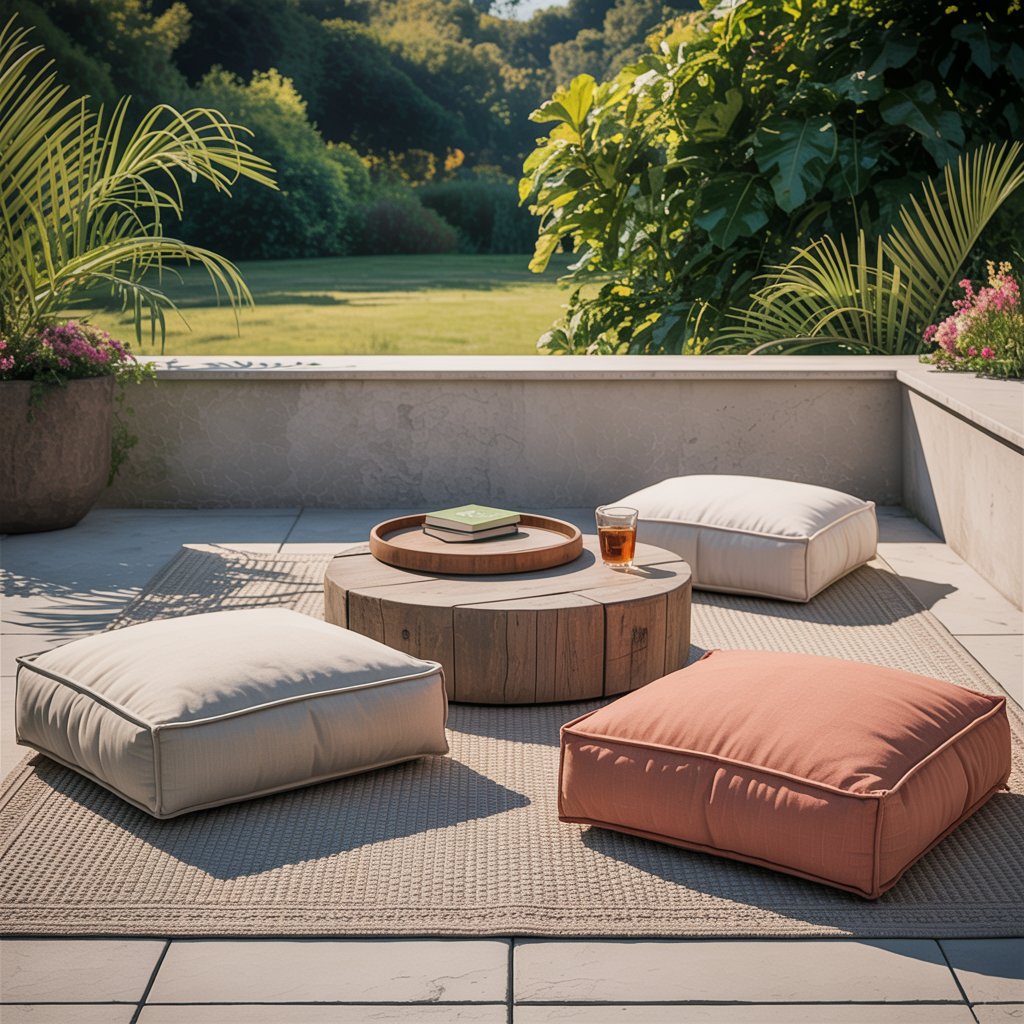
Pro Tip: Store floor cushions vertically against walls when not in use to minimize dirt accumulation from ground contact.
11. Bold Pop Art for Playful Energy
Inject fun with retro diner-style or abstract art pillows featuring bright splashes of color. These conversation starters work best in kid-friendly spaces or creative professional yards (like artist studios). Limit to one pillow per seating area to maintain design cohesion.
Pair pop art pillows with sleek mid-century furniture for contrast. A hot pink comic-strip pillow looks stunning against teak chairs. For subtlety, choose pillows with black outlines that define shapes clearly against busy backgrounds. Avoid placing these near actual art installations—they’ll compete rather than complement.
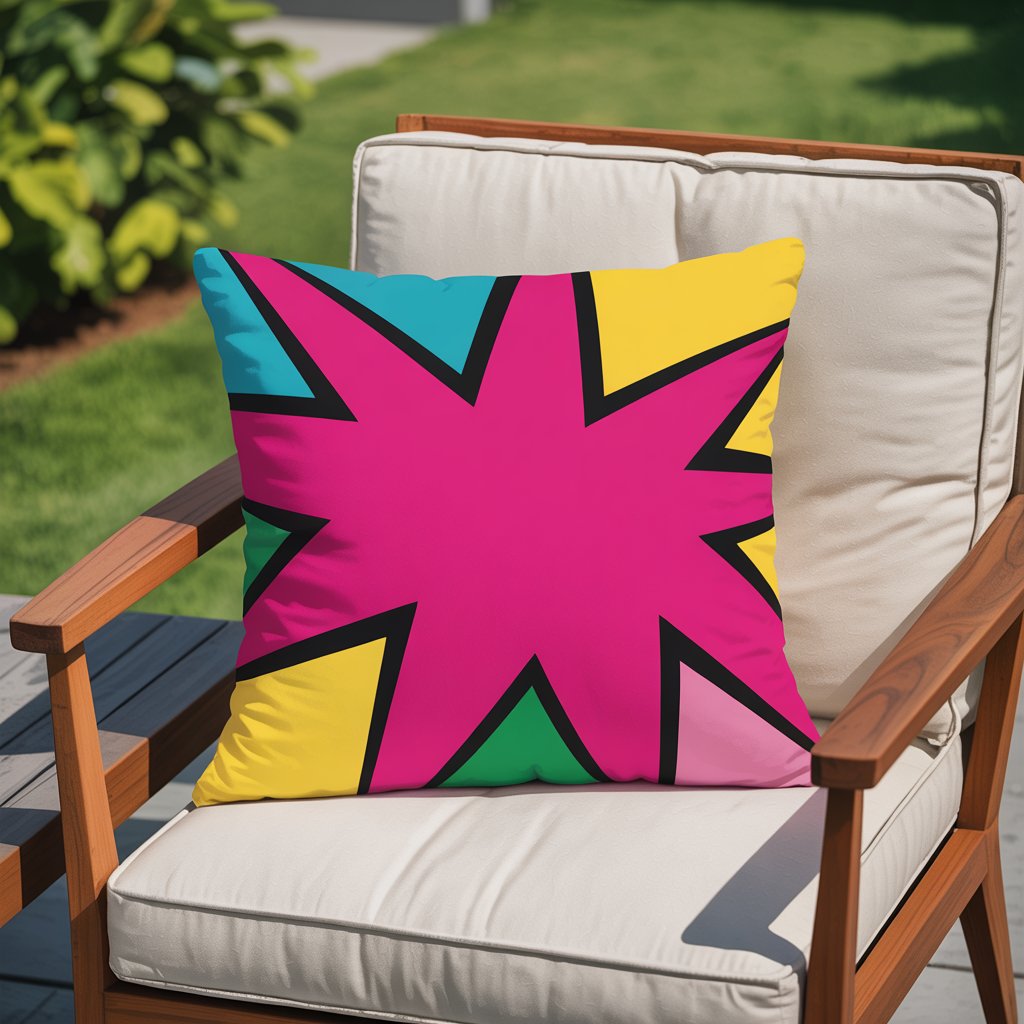
Pro Tip: Rotate pop art pillows seasonally. Bright yellow works for summer but feels jarring against fall foliage—opt for burnt orange versions instead.
12. Natural Fiber Weaves for Organic Texture
Incorporate seagrass, jute, or hemp-wrapped pillows for earthy authenticity. These materials breathe beautifully in humid climates while adding organic warmth. Modern weather-treated versions resist mildew better than traditional counterparts.
Use fiber-weave pillows as lumbar supports on deep sofas where their textural detail will be visible up close. Pair with matching woven ottomans or plant hangers for cohesive styling. Coastal homes should avoid pure jute (prone to salt damage); opt for synthetic blends instead. In desert regions, these fibers won’t overheat like dark solids might.
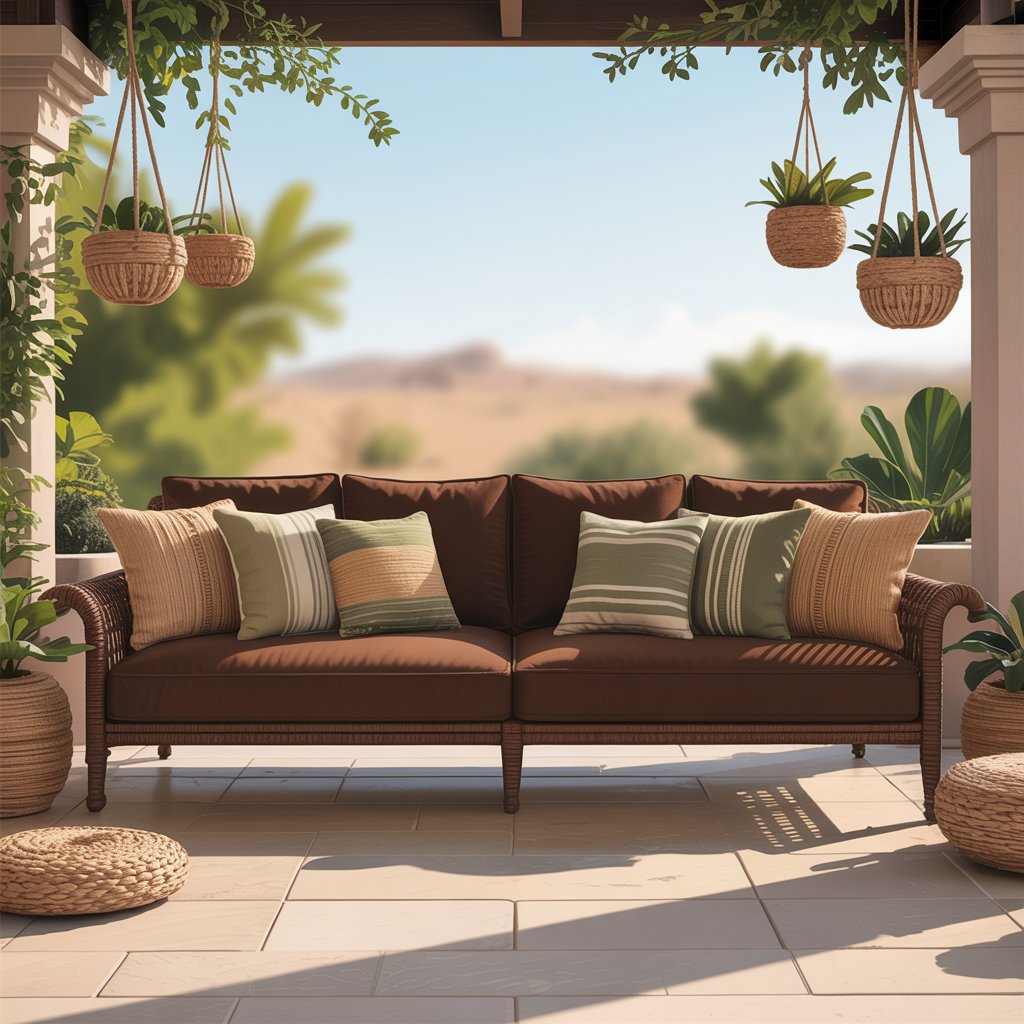
Pro Tip: Brush natural fiber pillows weekly with a stiff-bristled brush to prevent dirt from embedding in textured surfaces.
13. Lumbar Pillows for Ergonomic Support
Address back comfort with lumbar pillows (12″x20″ typically). These narrow cushions provide crucial lower-back support on deep seating where standard pillows fall short. Choose firm fills that maintain shape when compressed for extended periods.
Place lumbar pillows leaning against chair backs rather than stacked horizontally—this prevents slippage during use. In sectional arrangements, position them at seating transitions where body angles change. For maximum support, select pillows with slight inward curves matching lumbar spine contours. Earthy tones work best since they’ll show less dirt from frequent contact.
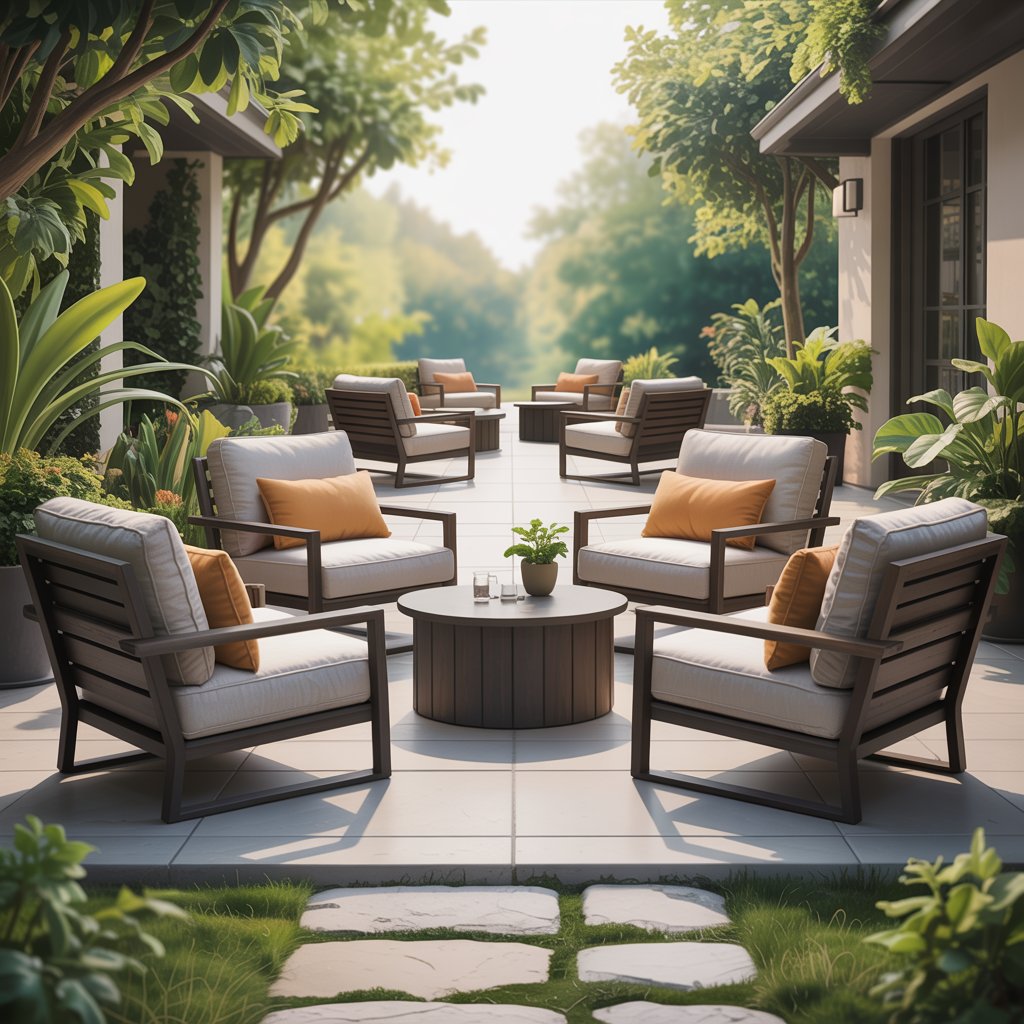
Pro Tip: Add a non-slip pad between lumbar pillows and chair backs to prevent frustrating slides during conversation.
14. Color-Blocked Pillows for Architectural Interest
Make bold statements with two-tone or tri-color blocked designs that create optical illusions. A pillow split diagonally navy/white visually “lifts” heavy furniture, while horizontal blocks elongate compact spaces. These modern designs thrive on contemporary furniture with clean lines.
Balance color-blocked pillows with solid neutrals to prevent visual fatigue. On a sectional, place the most vibrant block on the end chair for accent, fading to subtler blocks toward the center. Desert landscapes accommodate cool color blocks (blues/greens) that provide cooling visual relief against warm surroundings.
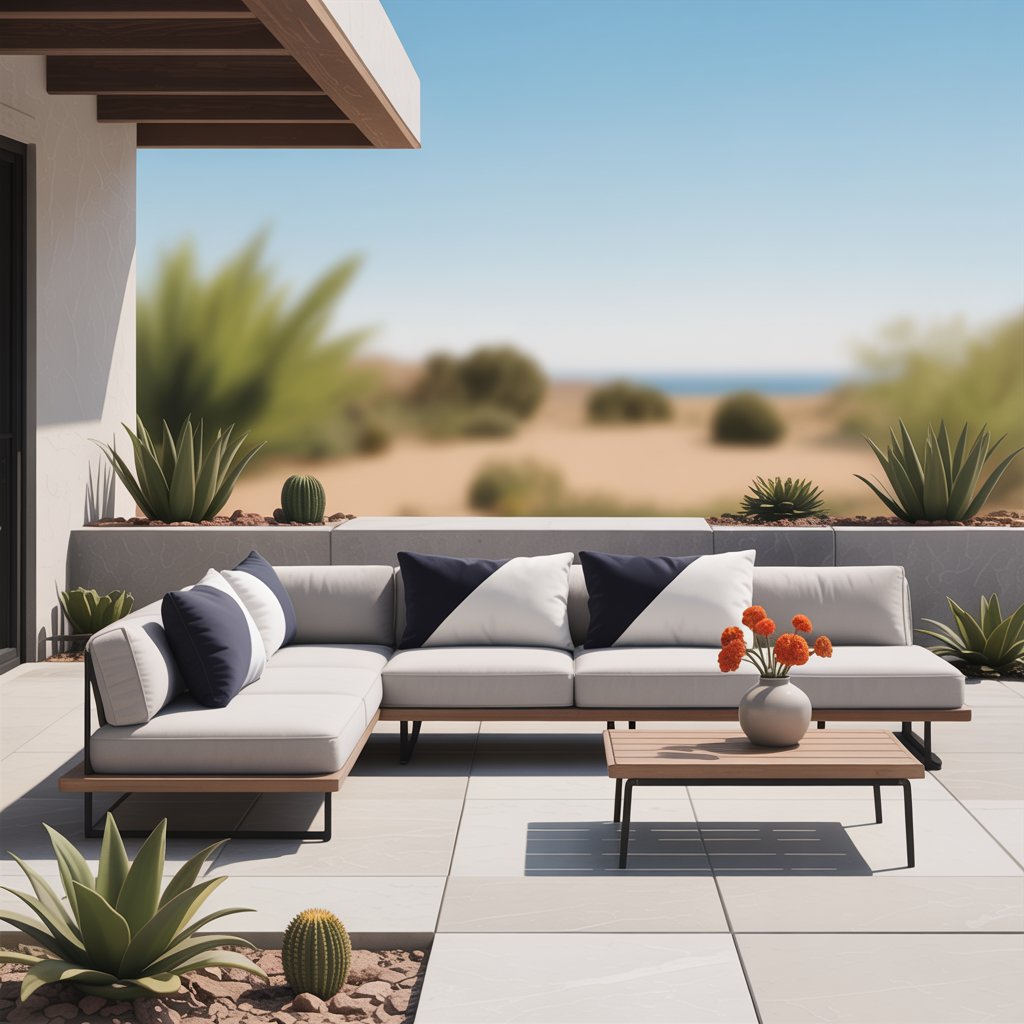
Pro Tip: Choose blocks with intentional color psychology—blue/white combos enhance relaxation (ideal for lounges), while red/yellow combinations stimulate conversation (perfect for dining areas).
15. Thematic Pillows for Holiday Rotation
Rotate seasonal pillows featuring subtle holiday motifs: pumpkin spice plaids for fall, iced berry patterns for winter holidays, pastel egg prints for spring. Avoid overt commercial logos—opt for sophisticated interpretations that blend with your overall aesthetic.
Create a dedicated waterproof storage bin for off-season pillows. Most quality outdoor fabrics withstand 3-4 seasonal rotations before noticeable fading. Host a “pillow swap party” with neighbors to refresh your collection cost-effectively—this builds community while expanding your design options.
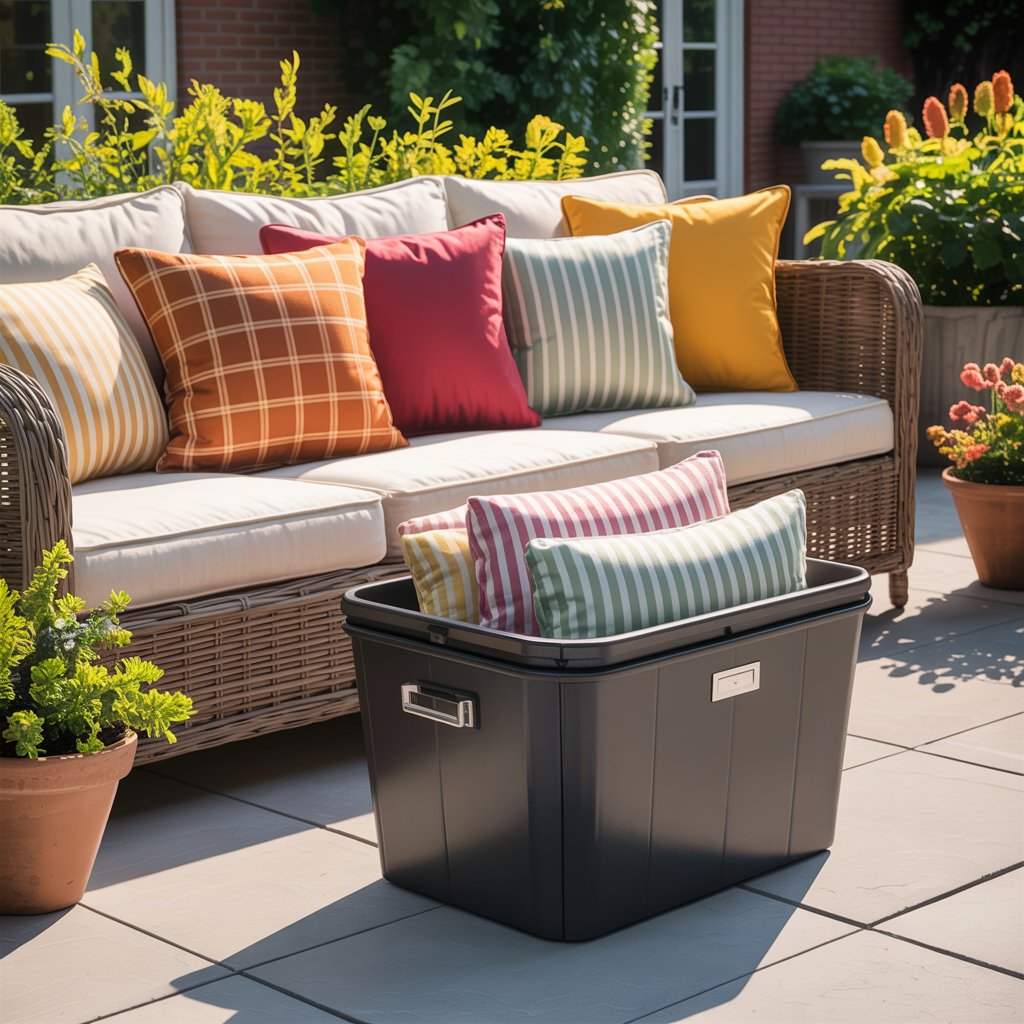
As noted by decor experts: “Throw pillows are often the unsung home decor heroes, but they can transform a room from dull to dazzling with minimal effort” (theglitzypear.com).
Fabric Performance Comparison: Your Quick Reference Guide
| Fabric Type | UV Resistance | Water Resistance | Care Difficulty | Price Range | Best For |
|---|---|---|---|---|---|
Sunbrella | ★★★★★ | ★★★★☆ | Low | $$$$ | High-sun areas, poolsides |
| Acrylic Blend | ★★★★☆ | ★★★☆☆ | Medium | $$$ | Moderate climates |
| Polyester Weave | ★★★☆☆ | ★★★☆☆ | Medium | $$ | Budget-conscious buyers |
| Outdoor Velvet | ★★★☆☆ | ★★★★☆ | High | $$$$$ | Evening entertaining |
| Natural Fiber | ★★☆☆☆ | ★★☆☆☆ | Very High | $$-$$$ | Dry climates only |
Pro Care Checklist: Extend Pillow Life by Years
✔️ Rotate monthly – Shift positions weekly to ensure even sun exposure
✔️ Brush weekly – Remove pollen/debris with soft bristle brush
✔️ Deep clean quarterly – Use mild detergent in cold water cycle
✔️ Store properly – In breathable cotton bags (never plastic!) during off-seasons
✔️ Inspect annually – Replace pillows showing fabric pilling or fading
Investing in quality outdoor throw pillows delivers disproportionate returns for your patio’s ambiance. As you implement these 15 ideas, remember designer Courtney Marquez’s wisdom: “Outdoor pillows are the easiest swap for seasonal refreshes—they’re like jewelry for your furniture.” Start with three foundational pillows in your palette, then rotate accents throughout the year. Within weeks, you’ll find yourself lingering longer in your transformed outdoor sanctuary, savoring those golden-hour moments in unprecedented comfort and style.
